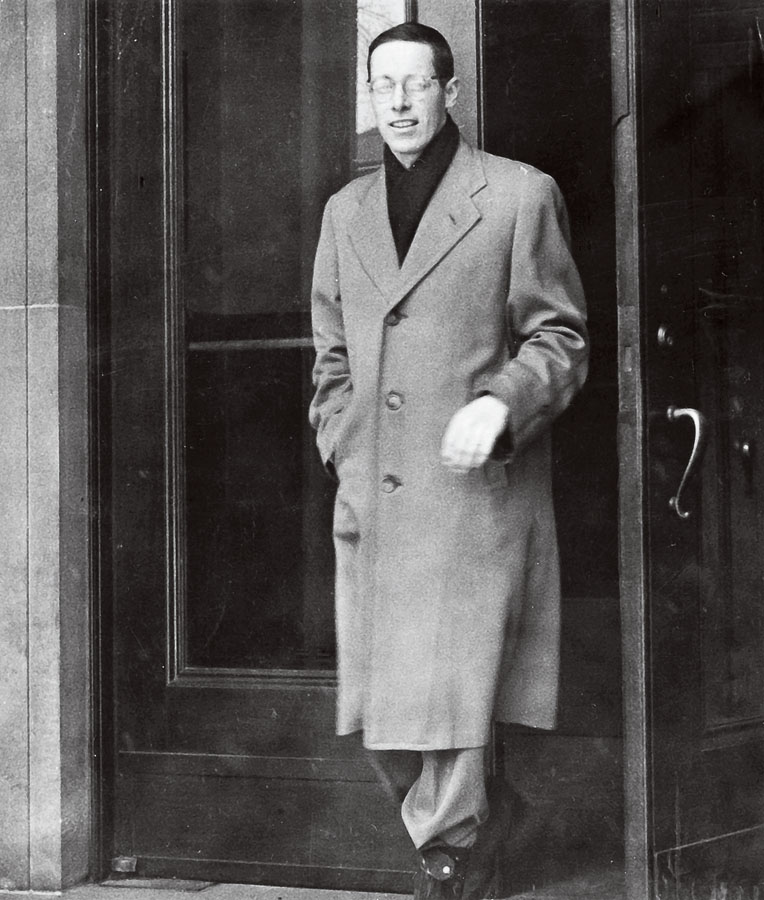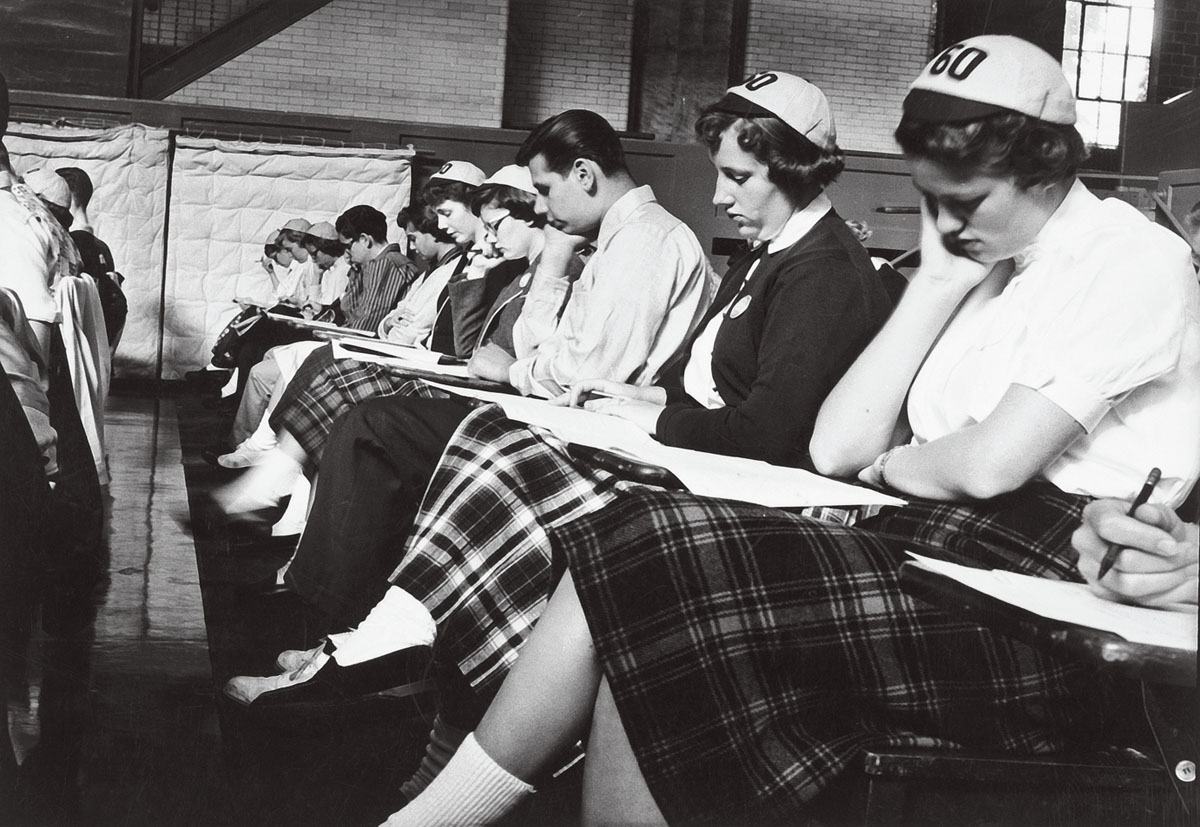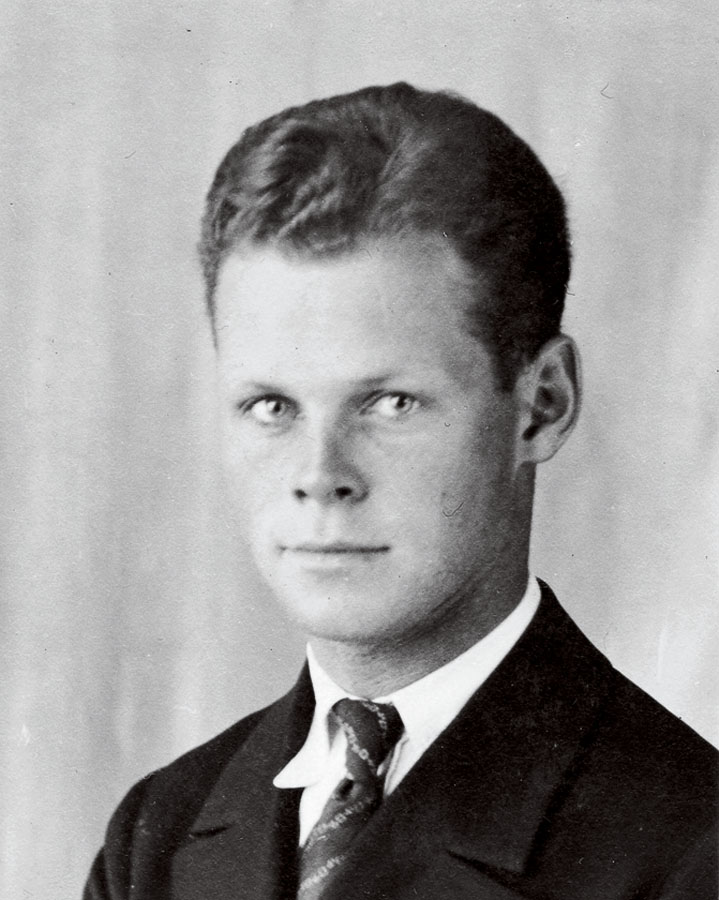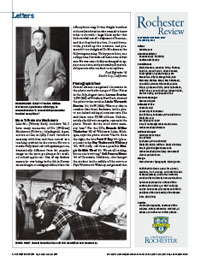Letters
 REMARKABLE LEGACY: The late William Muchmore, a professor of biology, is remembered as “a remarkable person who touched many lives.” (Photo: University Libraries/Department of Rare Books, Special Collections, and Preservation)
REMARKABLE LEGACY: The late William Muchmore, a professor of biology, is remembered as “a remarkable person who touched many lives.” (Photo: University Libraries/Department of Rare Books, Special Collections, and Preservation)Like Ms. [Wendy Beth] Jackelow ’83, I have many memories of Dr. [William] Muchmore (Tributes, July-August). A generation earlier, in 1959, I took vertebrate anatomy with him and then served as a teaching assistant in the course. He was a wonderfully kind and soft-spoken person, dramatically different from his popular image as the stern gatekeeper for medical school applicants. One of my fondest memories was being in the lab in Dewey one midnight, staining my slides, when the office phone rang. It was freight handlers at the railroad station who wanted to know what to do with a huge black spider that had crawled out of a shipment of bananas, and that they had in a box. I raced downtown, picked up the creature, and presented it to a delighted Dr. Muchmore the following morning. Thirty years later, on a college tour, I introduced him to our oldest son. He was remarkably unchanged in appearance, voice, and personality. A remarkable person who touched so many lives.
Paul Ephraim ’61
Studio City, California
 WHO’S WHO? Alumni from the Class of 1960 identified their classmates. (Photo: University Libraries/Department of Rare Books, Special Collections, and Preservation)
WHO’S WHO? Alumni from the Class of 1960 identified their classmates. (Photo: University Libraries/Department of Rare Books, Special Collections, and Preservation)Photographic Test
Several alumni recognized classmates in the photo on the first page of Class Notes in the July-August issue. Lorena Stabins ’95W (MS) of Pittsford, New York, showed the photo to her mother, Linda Wermuth Stabins ’60, ’64W (MA). “She was able to confirm that those freshmen in the photo are indeed taking placement tests. She said there were TONS of them. Unfortunately, she did not recognize anyone in the photo. Thanks for the stroll down memory lane.” For the ID’s, Brenda Miller Thalacker ’60 of Whitmore Lake, Michigan, says the photo shows “fourth from the right, the late Patti O’Day ’60 (glasses), next to her Fay Wadsworth Whitney ’60, ’61N (tall), and then a possible Margie Griffith Ward ’60. We are all reading, but no one is writing.” Gail Paxson Mates ’60 of Coronado, California, also thought the student in the middle of the row was Faye Wadsworth Whitney and guessed that the first student on the right is Patricia Wheeler Green ’60, ’61N and next to her, Barbara Joan Sloan ’60. Gail notes: “Wonder if all were snoozing!” And for Ellen Kleinman Siff ’63 of Trumbull, Connecticut, the photo prompted a thought about beanies and tests: “In addition to the dreaded beanies (as the Class of 1963, we were the last required to wear them), I seem to recall that, shockingly, we took the MMPI. Or perhaps that was our class.”
Totally Thoreau
Your fascinating story about Raymond Borst’s devoted Thoreau scholarship should have us all thinking about him during his bicentennial year. Another Rochester figure who had strong connections to Thoreau and who must have known Borst well, was Steve Thomas, the late director of the Rochester Museum and Science Center. He had two great loves, mushrooms and Thoreau, and had been the president of the Thoreau Society.
When he graduated from college, he went to Concord to meet an old man who as a teenager had helped Thoreau move a piano, the same Thoreau who, walking the Cape, met the octogenarian Oyster Man of Wellfleet, who as a boy had seen George Washington ride into Boston with his troops. The story gives me goose bumps, feeling how closely we are connected to our Revolution. Until September 10, there is a remarkable show of over 100 relics from Thoreau’s life at the Morgan Library in New York City, and it will move to the Concord Museum from September 29 through January 21, 2018.
David Tinling ’63M (Res)
Rochester, Vermont
A Draft of Baseball History
 John G. (Scotty) Burns (Photo: University Libraries/Department of Rare Books, Special Collections, and Preservation)
John G. (Scotty) Burns (Photo: University Libraries/Department of Rare Books, Special Collections, and Preservation)In the July-August issue, I was drawn to the baseball article, “Yellowjacket Pitcher Drafted to Major Leagues.” The subtitle especially drew my attention, as it referred to John Ghyzel ’18 as the “second Rochester baseball player ever drafted by a professional organization” and referred to Michael Weiermiller ’83 as being the first.
While I certainly respect the accomplishments of these two U of R athletes, I would like to mention that my father, John G. (Scotty) Burns (1906–67), was drafted by the St. Louis Cardinals in his senior year at the University in 1929.
Let me quote from an article about my father that was published in the Rochester Times Union on June 12, 1967: “In 1929, he was signed to the St. Louis Cardinal organization by Branch Rickey and Warren Giles. He was with the Rochester Red Wings, then later played for the Danville, Ill. entry in the Three Eye League.”
My father was an outstanding athlete and starred in both baseball and basketball at the University. After retiring from professional baseball during the Great Depression, he continued to play semipro baseball and basketball for a number of years in the Rochester area.
My brother, John G. Burns Jr. ’57, followed in my father’s footsteps and was captain of the U of R’s baseball and basketball teams; I ran track for four years and briefly played football there.
The University has a long history, and I thought you would want to be aware of my father’s achievements.
Richard Burns ’67
Silver Spring, Maryland
Dennis O’Donnell, director of athletic communications, replies:
Thank you for bringing to light your father as someone who signed with the St. Louis Cardinals. Scott Sabocheck’s story mentioned only the players who were taken in the Major League Baseball draft, which began in 1965. Before that, teams did their own scouting work and the scouts would recommend which players were worthy of a professional contract. One famous example of a scout was Tom Greenwade. He worked for the Brooklyn Dodgers and recommended to Branch Rickey that a young player named Jackie Robinson was worth a contract. Later when he worked for the Yankees, one of his suggested players was Mickey Mantle.
In writing about John Ghyzel, we limited our story to MLB draftees from 1965 on because we were concerned that before that point, we would miss some people—your dad among them. The Cardinals, with the Rochester Red Wings as their farm team, had an advantage in terms of athletes getting a lengthy look. Gerald Zornow ’37, for example, was signed by St. Louis after graduation.
We are always seeking ways to update our information. Right now, we are trying to focus on no-hitters for baseball. We suspect there have been more than two, but can only generate information on two: David Strandberg ’17 threw a no-hitter against Bard College in 2014 and Bill Standera no-hit St. Bonaventure in 1970. Are you aware of any others?
Our coaching records indicate that your dad played for Edwin Fauver through 1928, then for Tom Davies in his senior year (1929). Your brother would have played for Lou Alexander, for whom the Louis Alexander Palestra is named.
Review welcomes letters and will print them as space permits. Letters may be edited for brevity and clarity. Unsigned letters cannot be used. Send letters to Rochester Review, 22 Wallis Hall, Box 270044, University of Rochester, Rochester, NY 14627-0044; rochrev@rochester.edu.

